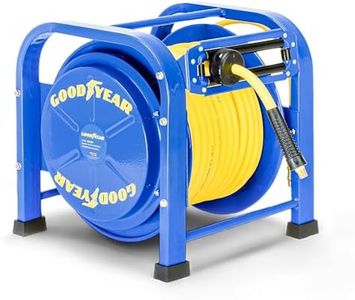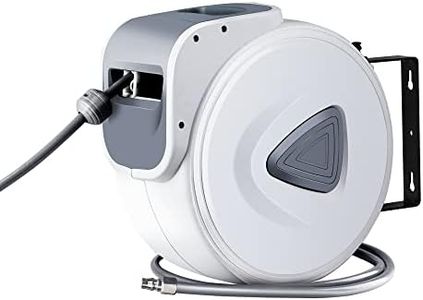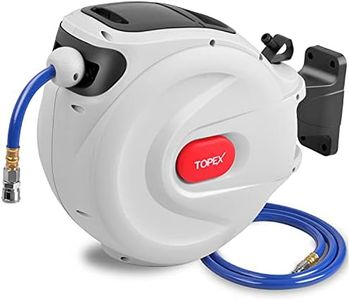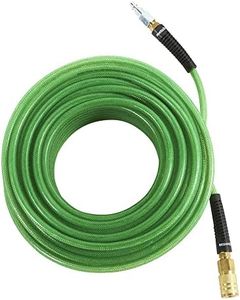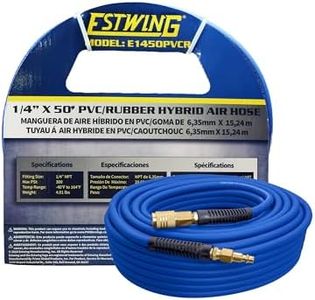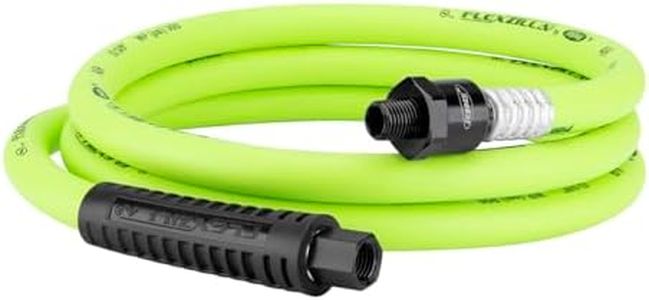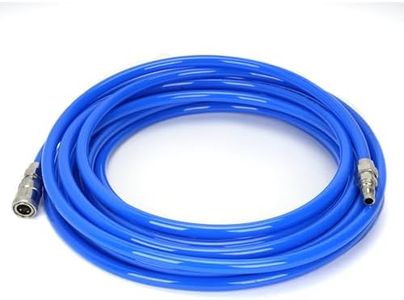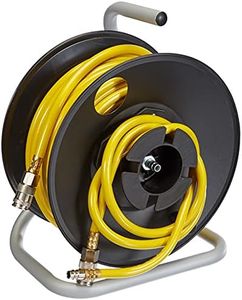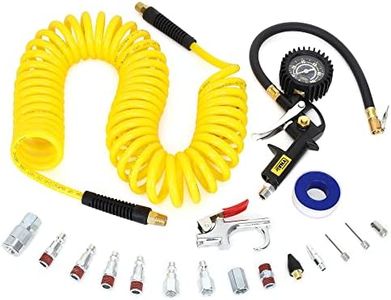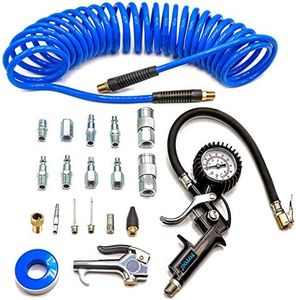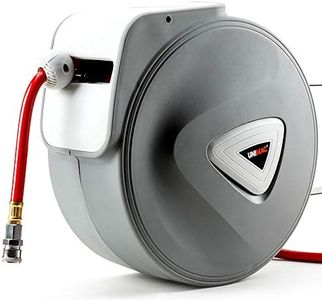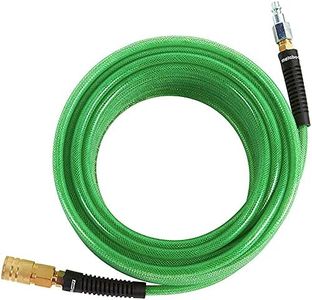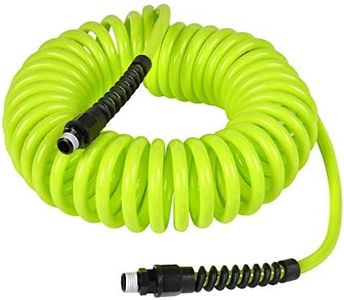We Use CookiesWe use cookies to enhance the security, performance,
functionality and for analytical and promotional activities. By continuing to browse this site you
are agreeing to our privacy policy
10 Best Air Compressor Hoses
From leading brands and best sellers available on the web.Buying Guide for the Best Air Compressor Hoses
Choosing the right air compressor hose is important because it affects the performance, safety, and convenience of using your air tools. The right hose will ensure you get consistent airflow, work efficiently in your space, and reduce the chances of leaks or failures. Consider the type of projects you'll be doing, how far away you need to work from your compressor, the environment in which you'll use the hose, and how much flexibility you need for easy movement.Hose LengthHose length refers to how far the hose can reach from your air compressor to your tools. Short hoses (up to 25 feet) are best for close, indoor tasks where the compressor is near your workspace, reducing air pressure loss. Medium hoses (25 to 50 feet) offer more flexibility without too much drop in air pressure and work well for most home garages or small shops. Long hoses (50 feet or more) are best if you need to move around a larger area or work outside but may reduce airflow slightly. Think about the space you usually work in and if you need that reach; choose the shortest hose that still lets you work comfortably.
Hose DiameterThe diameter is the width of the hose opening and directly impacts how much air can flow through it. Common sizes include 1/4 inch, 3/8 inch, and 1/2 inch. A 1/4-inch hose is lighter and more flexible, great for smaller air tools and portability, but it delivers less air. A 3/8-inch hose is versatile and works for most common air tools, providing a good balance of airflow and flexibility. A 1/2-inch hose is suited for heavy-duty tools that need a lot of air at once, but it's heavier and less flexible. Match the diameter to the air requirements of your tools; check tool specifications or ask for guidance if unsure.
Material TypeAir compressor hoses are typically made from rubber, PVC (polyvinyl chloride), polyurethane, or hybrid materials. Rubber hoses are flexible, durable, and work well in cold conditions but can be heavy. PVC hoses are lighter and cheaper but can become stiff and kink in cold weather. Polyurethane hoses are lighter than rubber, remain flexible in various temperatures, and resist kinking, making them suitable for frequent use and rough conditions. Hybrid hoses blend different materials to balance flexibility, durability, and weight. Think about the climate you'll use the hose in and whether you prefer ease of movement or toughness.
Max Working PressureThis is the highest amount of air pressure the hose can safely handle, usually shown in PSI (pounds per square inch). Most home compressors work under 150 PSI, but some tools and compressors go higher. Make sure to choose a hose with a maximum working pressure at least as high as your compressor's maximum output so that the hose doesn't fail during use. If you plan to use heavy-duty tools, double-check the pressure needs to stay safe and efficient.
Fittings and ConnectionsHose fittings are the ends of the hose that connect to your compressor and tools. Common fitting sizes are 1/4 inch and 3/8 inch. Quick-connect fittings allow you to easily attach and remove tools without tools. When picking, check your compressor and tool fitting sizes to ensure compatibility. Choosing the right type of fittings saves time and frustration during use and prevents leaks or accidental disconnections.
Flexibility and WeightFlexibility affects how easy it is to move, coil, and store the hose. More flexible hoses reduce hand fatigue and make it easier to move around objects or corners. Weight is also important because heavier hoses can drag or tire you out, especially during long jobs. If you'll use the hose in tight spaces or overhead, prioritize flexibility and a lighter hose.
Kink and Abrasion ResistanceKink resistance means the hose is less likely to twist or collapse, which can block airflow and make your work harder. Abrasion resistance refers to how well the hose withstands dragging over rough surfaces without wearing out. If you plan to move your hose around a lot, especially over concrete or gravel, choosing hoses designed with extra kink and abrasion resistance will help your hose last longer and keep your tools running smoothly.
